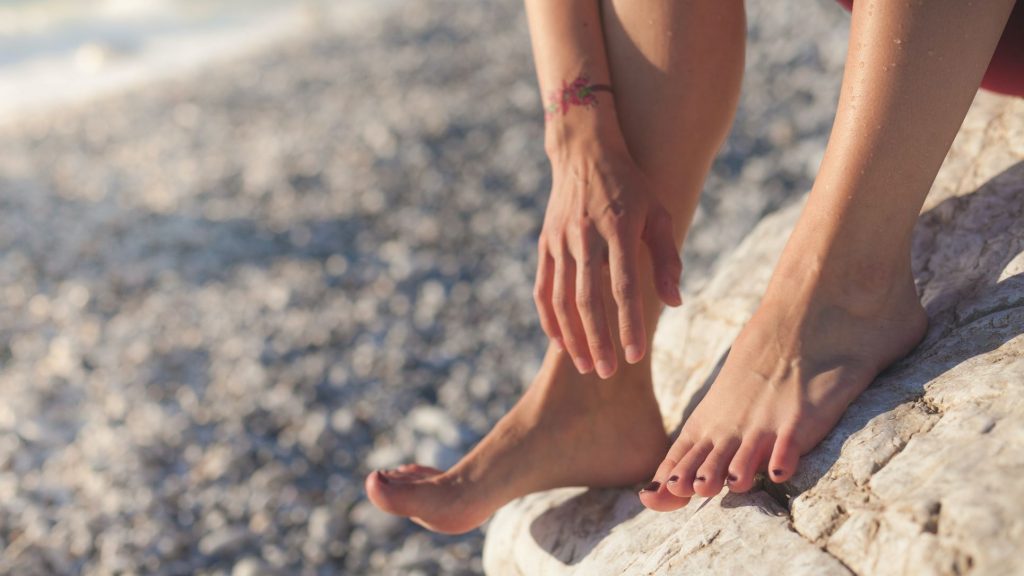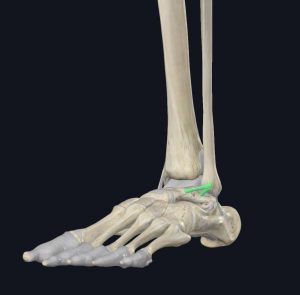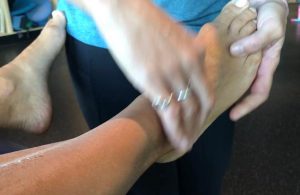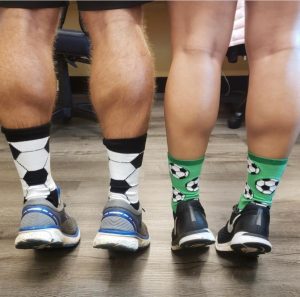
Ankle sprains are extremely common injuries, especially among agility athletes and hikers. Almost everyone experiences one, but is it normal to experience ankle sprains frequently?
No! Recurring ankle sprains are not normal and can be prevented.
Ankle sprains that occur frequently are signs of something else: Chronic ankle instability (CAI). This means that the structural support around the ankle is compromised, which leaves you vulnerable to re-injury. The more your ankle rolls, the more stress is placed on your ankle’s supporting ligaments, thus contributing to the vicious cycle of CAI.
How can you stop annoying, recurring ankle sprains in their tracks?
What is Chronic Ankle Instability?
Chronic ankle instability is characterized by prolonged signs and symptoms of an ankle sprain and the recurring pattern of ankle sprains or the ankle “giving way”.
The most common type of ankle sprain is a lateral ankle sprain, which happens when you roll your ankle inwards and stress the outside of the ankle. The most common ligament involved is the anterior talofibular ligament (ATFL) located just under the protruding bone on the outside of the ankle.
- The ATFL (highlighted) | Courtesy of Complete Anatomy
CAI develops in those with an ankle sprain when the initial sprain was not properly healed and rehabilitated. It causes recurring pain, swelling, weakness, and joint mobility limitations. Because of prolonged symptoms (and, for many athletes, quick return to play), recurring ankle sprains occur which worsen the issue and predispose the person to more injury.
We often see recurring ankle sprains as an issue in agility athletes. It usually happens when they perform cutting movements because of the force displaced laterally through the ankle, causing it to roll when it’s fixated on a surface. Unfortunately, it’s so common that an estimated 40% of athletes who have a lateral ankle sprain will develop CAI to some degree. (1)
In the long term, untreated CAI will lead to chronic issues like pain, weakness, and stiffness. It can also lead to poor balance and osteoarthritis which predisposes you to increased risk of falls as you age.
If it sounds like you might have CAI, what should you do?
Get Your Ankle Assessed by a Physical Therapist
If you’re recognizing these signs and symptoms of CAI, get assessed by a physical therapist. At JACO Rehab, we treat ankle injuries of all kinds including CAI. We can teach you the dos and don’ts of managing your ankle’s condition so that it can recover… and stay that way!
On your first day of physical therapy, you’ll be evaluated by a physical therapist whose goal is to fully understand your condition. We want to know about previous injuries, other medical history, and any other details that may influence your injury or recovery.
Then, your physical therapist will assess your ankle’s mobility and strength and compare it to your “normal” side as a baseline measure. We determine if there are any mobility deficits or abnormal laxity in your ankle, and we figure out if your ankle is strong against resistance and during functional tasks.
- Action shot of a physical therapist assessing a patient’s ankle.
We may ask you to perform activities like…
- Standing on your tip-toes
- Walking on your tip-toes
- Doing calf raises on one foot
- Balancing on one foot (even with your eyes closed or standing on a cushion)
… to fully understand the extent of your injury.
Once we have a good idea of your history, your presentation, and your goals for rehabilitation, we get to the good stuff. You work with your physical therapist to address any limitations and protect the ankle from reinjury.
Strengthening is Key for Chronic Ankle Instability
You’ll notice a common theme throughout your rehab for CAI: strengthening.
Ligament support is only part of the supportive mechanism of the ankle. It’s passive, setting tough boundaries of movement at the joint’s end range of mobility. But your ankle also needs active support through surrounding musculature. Even the small muscles of the foot and ankle can greatly influence your stability because they work to control actions in the joint by creating, stopping, or fine-tuning joint movement.
Strengthening the ankle can look different at various levels of effort and function:
- Simple resisted ankle motions in all directions
- Calf raises or tip-toe walking
- Jumping and cutting
- Balance activities
- Uphill running
When you think about it, almost every activity that requires your foot on the ground involve your ankles. But one of the most challenging positions is going on your toes. This is because the muscles on the outside of the foot work overtime to control the ankle in this position.
- Challenging our ankle strength with calf raises!
With CAI, your ankle shouldn’t be the only joint being strengthened. Larger muscles, like ones at your hip and trunk, help stabilize your extremities.
For example, when athletes cut, the abdominals, glutes, and quads help to absorb, displace, and create force that directs stress away from your ankle. Keeping those muscles strong and coordinated can contribute to ankle health and prevent the ever-common lateral ankle sprain.
Things To Avoid with Chronic Ankle Instability
CAI doesn’t have specific healing guidelines and depends heavily on personal factors that influence your healing rate like underlying medical conditions, environmental factors, activity level, sleep, and diet. However, there are some things to consider if you do have CAI and would like to recover well.
Avoid Bracing All The Time
Ankle braces have a time and place. If you want to protect your ankle with a brace during heavy activity, it’s acceptable… but it only provides passive support while the muscles, or your active support, relaxes.
Wearing an ankle brace all the time could be counterproductive. If your muscles get used to having a brace for support, they tend to turn off and become less conditioned, which is the OPPOSITE of what we want! The goal is to wean off an ankle brace and teach the muscles to support the ankle well.
Brace only when necessary, and try to expose your ankle to different environments as an opportunity for safe challenge and strengthening. The line between challenge and overwork is delicate, so when in doubt, ask your therapist how to wean off a brace during everyday activities.
Avoid Overstretching
If you have CAI, you will likely benefit more from strengthening than stretching. Remember that an ankle sprain is when a ligament overstretches, causing structural damage to the soft tissue. Stretching your ankle won’t cause more damage, but unless your therapist has identified a mobility limitation from muscular tightness, you may be placing effort in the wrong intervention. However, calf tightness can predispose some to ankle sprains, so stretching the calves could be an exception here. (3)
Avoid Babying Your Ankle
Since CAI can improve with strengthening, it’s important to work the ankle joint with the right exercises. Avoiding and resting the ankle can make your condition worse. Instead, visit a physical therapist and get a list of exercises that you can practice at home to improve your ankle strength, which will improve its stability. Some ankles are more weak than others, so a physical therapist can tailor your exercise program specific to what you need.
Reach out!
If you suspect CAI, get a physical therapy evaluation to rehab your injury and prevent future ones. Ankle sprains are a common, preventable injury, so don’t this injury turn into a chronic issue.
Reach out to JACO Rehab and get your initial evaluation booked. Or, if you think you or your team may benefit from some preventative medicine, book an Injury Prevention Session at the JACO Rehab Kapolei location on Saturdays!
References
1. Doherty C, Bleakley C, Hertel J, Caulfield B, Ryan J, Delahunt E. Recovery from a first-time lateral ankle sprain and the predictors of chronic ankle instability: a prospective cohort analysis. Am J Sports Med. 2016;44(4):995–1003.
2. Hertel, J., & Corbett, R. O. (2019). An updated model of chronic ankle instability. Journal of athletic training, 54(6), 572-588.
3. Tabrizi P, McIntyre WM, Quesnel MB, Howard AW. Limited dorsiflexion predisposes to injuries of the ankle in children. J Bone Joint Surg Br. 2000;82(8):1103–1106.


